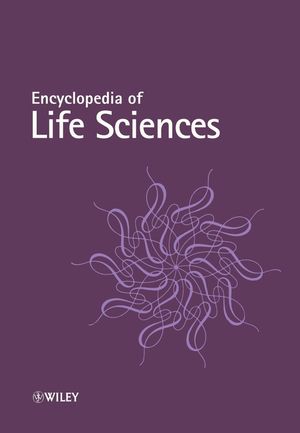Encyclopedia of Life Sciences, 20 Volume SetISBN: 978-0-470-01617-6
Hardcover
14288 pages
October 2005
 |
||||||
Wiley is pleased to announce the recent acquisition of the prestigious Encyclopedia of Life Sciences (ELS) from the Nature Publishing Group.
"The most ambitious single source reference source ever produced in the biological sciences"
—American Reference Books Annual
Spanning the entire spectrum of life science research, the Encyclopedia features more than 3,000 specially commissioned and peer-reviewed articles. These concentrate primarily on the molecular and cellular life sciences, including biochemical topics, methods and techniques. Applied areas of science are also included on a selective basis, as are biographies and general interest articles on ethics and the history of science.
Articles are divided into three categories indicating their level of complexity:
Introductory articles
- ELS features more than 1,400 introductory level articles. These have been written primarily for undergraduates and non-specialists requiring the basic concepts of a particular subject. Scientists and researchers looking to extend their knowledge outside their own specific field of interest will also find these articles useful.
Advanced articles
- Over 1,800 advanced articles provide more detailed discussions of specialised subjects, at a level equivalent to that found in graduate level texts.
Keynote articles
- Written by leading international scientists, these keynote articles cover hot topics and controversial issues.
All articles have been rigorously peer-reviewed and edited prior to publication by an international Editorial Advisory Board of 180 subject specialist advisors.
Most articles are accompanied by colour illustrations and tables, with appendix and glossary material providing essential information for the non-specialist, including biochemical and taxonomic information, acronyms/synonyms, units and other technical data.
"In particular, the illustrations are excellent..."
—Microbiology Today
The ELS provides an excellent source of information for undergraduates, graduates, post-graduates, teachers/lecturers as well as professionals and researchers working in the biomedical sciences and related areas. Although chapters on more complex subjects have been written primarily for those with a scientific background, unnecessary technical jargon is avoided, enabling the material to be accessed by the non-specialist.
"This resource is a must-have for all biological sciences libraries and most larger academic and public libraries. It will be used often by undergraduate and graduate biology students, scientists, researchers, professors and government employees and journalists."
—American Reference Books Annual



